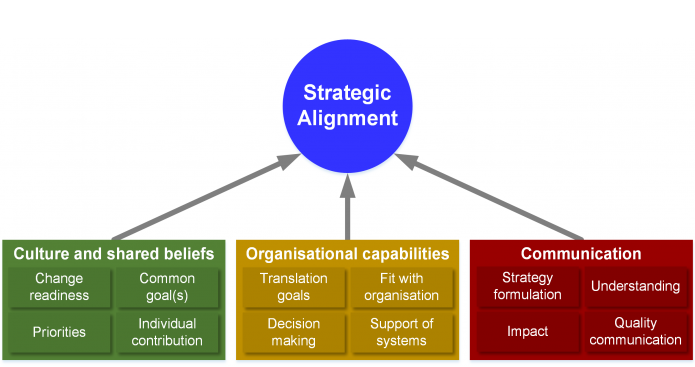Nowadays, organizations operate in a dynamic and fast-changing environment, which makes formulating a consistent strategy very challenging and executing that strategy even more difficult. Most organizations have not successfully executed Strategic Portfolio Management. Moreover, a majority of organizations face problems when executing their strategic vision.
In an environment where competition and globalization of markets are intensifying, managing and surviving change becomes increasingly important. Strategic Portfolio Management aligns projects and investments with business goals to maximize value and drive long-term success. It helps organizations prioritize resources, adapt to changes, and achieve strategic objectives efficiently.
ALSO READ: Everything you need to know about Enterprise Architecture Strategy
A business strategy determines the decisions and course of action businesses take to achieve competitive advantage and is crucial to surviving change. Nonetheless, several economic studies indicated that many organizations fail to implement strategic alternatives. Consequently, it is essential to know more about the reasons underlying the difficulties of organizations in reaching strategic alignment.
Organizations develop and implement strategies to achieve (strategic) goals. Developing a strategy is about formulating what should be changed to evolve from the current situation to the desired future state. Strategy implementation is about translating the strategic plans into clear actions to execute the strategy. Strategic alignment is the ability to create a fit or synergy between the position of the organization within the environment (business) and the design of the appropriate business processes, resources, and capabilities (IT) to support the execution. Strategic alignment cannot be reached when strategy development is considered a separate process from strategy implementation. Strategy development and strategy implementation are intertwined processes that both need to be successful for superior firm performance.

Strategic Alignment
Many factors influence the way organizations move from strategy development to strategy implementation. Consequently, strategic alignment is influenced by several factors contributing to a strategy’s successful development and implementation. We distinguish three categories in which several factors influencing strategic alignment are combined.
How organizations manage the factors within these three categories determines whether they can reach strategic alignment. These three categories are:

Culture and shared beliefs, Organizational capabilities, Communication
In conclusion, Strategic Portfolio Management is not merely about crafting a compelling vision—it is about ensuring that every facet of the organization is aligned and working cohesively towards that vision. The journey from strategy development to execution requires overcoming cultural, operational, and communicational challenges to achieve true strategic alignment. Companies can bridge the gap between intention and action by integrating clear communication, the right organizational capabilities, and a shared commitment among all employees. Ultimately, embracing strategic portfolio management empowers organizations to adapt more efficiently to change, optimize resource allocation, and secure a competitive edge in today’s rapidly evolving business landscape.
Consultant
Henry is the former co-founder and managing director of Bizzdesign. He is known for his work in the field of systems and control engineering, and business process management. He also has strong business development professional skills in Digital Transformation, TOGAF, Business Processes, Business Alignment, and Business Process Design.